John Carroll, Professor Emeritus of Sociology at La Trobe University, penned a ridiculous article in Fairfax over the weekend hailing Melbourne as the bastion of Australia’s economic success:
The Australian Dream is there around the tables in the cafes in newly cosmopolitan inner cities, where young professionals meet to transact business, or catch up; and others work alone on their laptops…
It is a timely moment to stand back to reflect on Australia. The prompt is the long quarter-century boom that started around 1990, two centuries on from European settlement. This boom is a singular and extraordinary world achievement, one that tends to be undervalued here, and is often totally neglected.
It is the city that has determined modern Australia’s economic dynamism. Australia is spectacularly good at modern cities…
Melbourne has been transformed from two decades or so ago, when it was threatened with the rust-bucket status…
A quarter-century on from 1990, the city is a much more vital and diverse place, with a flourishing economy. Melbourne has ended Sydney’s 30-year run of faster population growth. In 2013, it possessed the four fastest-growing postcodes in the country. And the state has had the nation’s healthiest government balance sheet.
Four conditions have combined to generate dynamism – a broad economy, high rates of multicultural immigration, topography, and a fusion of urban cosmopolitanism with suburban localism…
Seventy years of multicultural immigration has seen the population expand from 1.2 million in 1945 to 5 million (Greater Melbourne statistical area)…
Melbourne’s centre has been transformed in the last 25 years from an office wasteland into a throbbing heart in which 50,000 people are now domiciled…
One axis of the new Melbourne dynamism is the counterpoising of inner-urban dynamic cosmopolitanism with enthusiastic suburbanism, cross-fertilising each other… since 1990, the CBD and its urban fringe have built a critical mass of cafes, bars, restaurants and cinema/theatre/sport attractions that acts centripetally on suburban dwellers, especially at weekends…
Not once in the article did Carroll mention any downsides from Melbourne’s hyper-growth or ponzi economic model.
A balanced assessment by Carroll would have acknowledged that the cost (and quality) of housing has unambiguously eroded, as evident by the huge escalation in Melbourne’s dwelling price-to-income ratio from 5.2 in 2002 to 7.5 in 2017, according to CoreLogic:
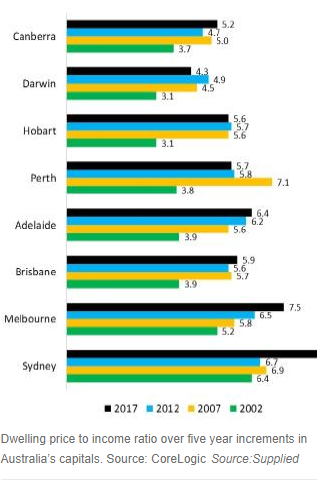
A balanced assessment would also have acknowledged that the home ownership rate for those aged under-40 has fallen precipitously across Melbourne, from 36% in 2002 to just 21% in 2014 (and likely lower now):
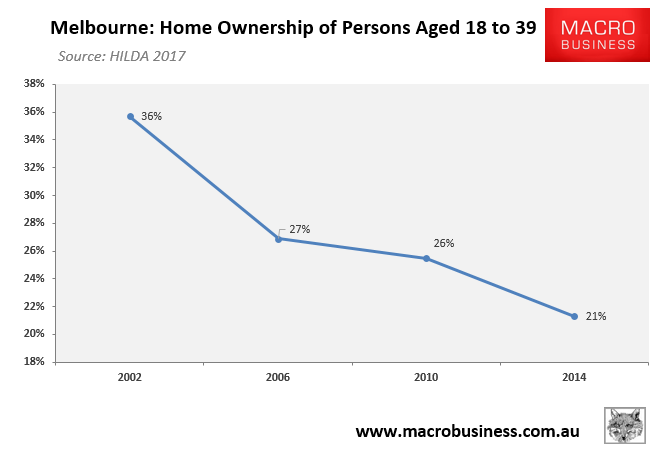
With the proportion of households thrown onto the rental market growing massively:
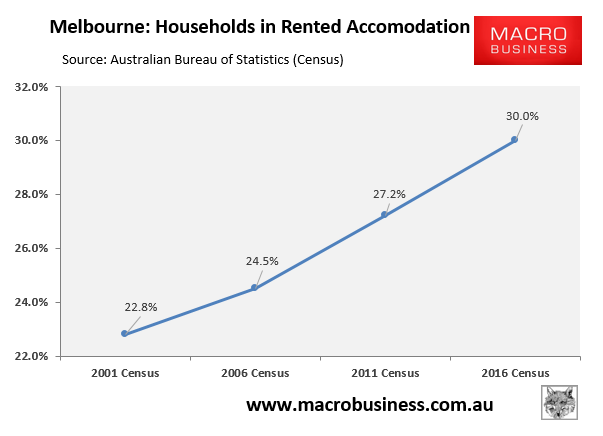
And the proportion of new rental lettings that are ‘affordable’ to lower income households vanishing:
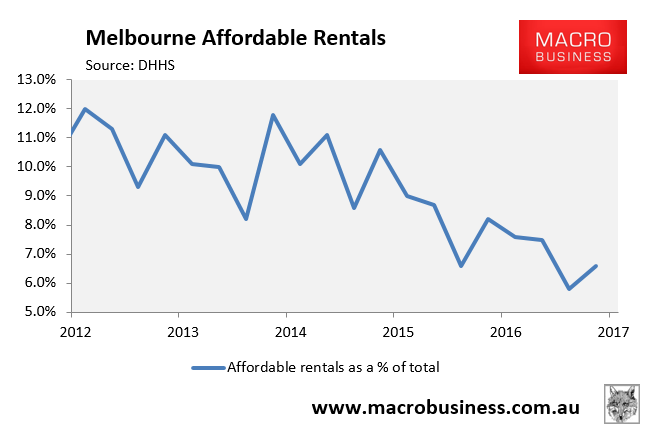
With the proportion of lower income households now in ‘rental stress’ escalating:
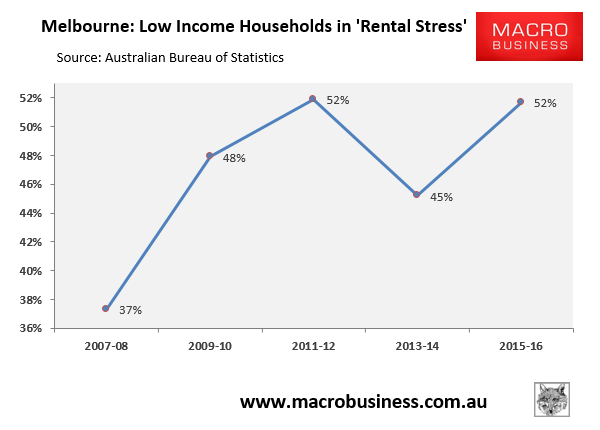
What sort of ‘miracle’ city throws its youth onto the housing scrap heap?
Carroll’s claim that Victoria “has had the nation’s healthiest government balance sheet” is also dubious as it ignores the massive increase in stamp duties and land tax receipts, which will evaporate if/when the property bubble bursts:
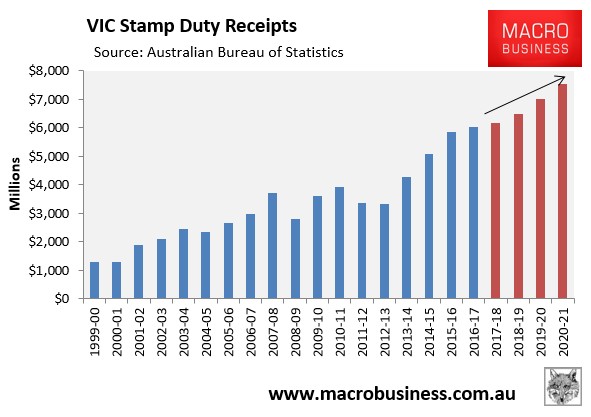
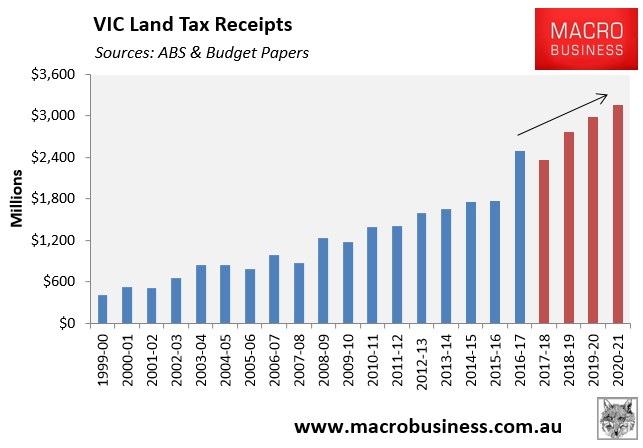
As well as the woeful under-investment in infrastructure by the State Government, which has left a critical infrastructure deficit across Melbourne.
Carroll’s understanding of economics also leaves a lot to be desired. If he had bothered to study the data pertaining to Melbourne, he would have discovered that since the onset of the Global Financial Crisis (GFC) in 2008, per capita gross state product (GSP) in Victoria had risen by a pathetic 0.8%:
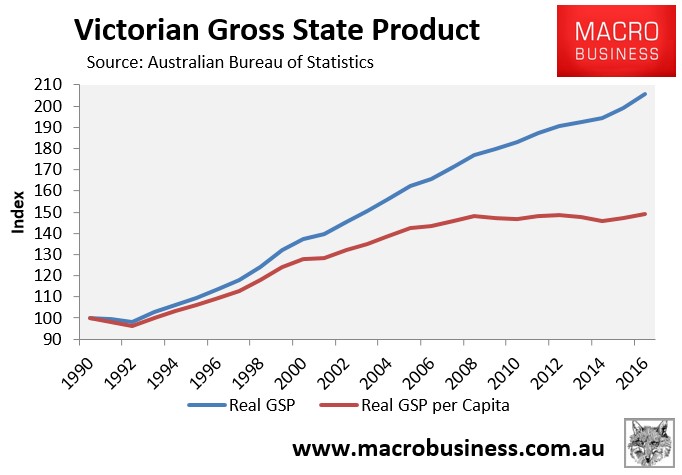
Whereas per capita State final demand has also barely risen since the GFC, despite robust (population-driven) aggregate growth:
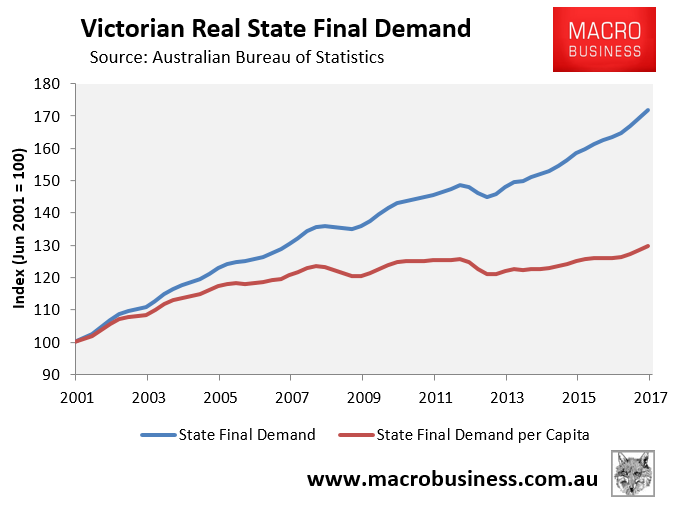
Carroll also would have discovered that Victoria (read Melbourne) has experienced the lowest increase in per capita GSP in the nation since the GFC:
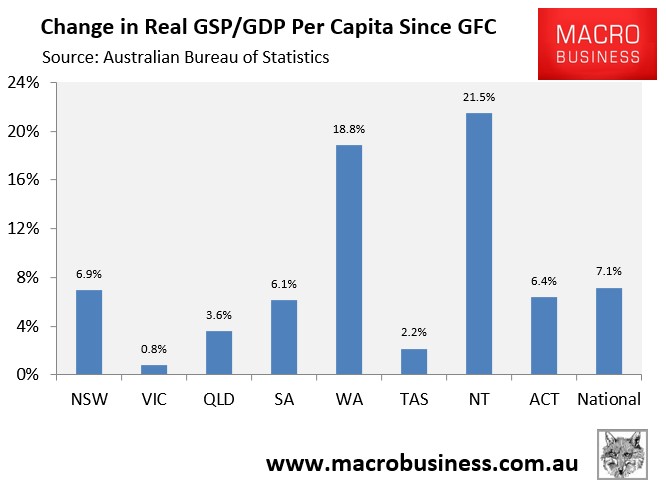
And that Victoria has the lowest per capita gross disposable income on the mainland, only beating out lowly Tasmania:
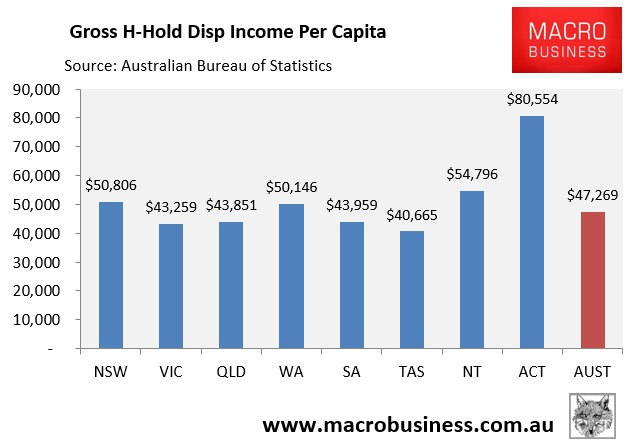
What Carroll doesn’t seem to understand is that Victoria’s (Melbourne’s) economic pie has grown due to rampant population growth. But everyone’s slice of that pie has stayed the same (and shrunk once wider impacts are taken into account)!
Victoria is running a ponzi economy based on endless population growth (mostly immigration), which in turn has juiced its services industries (think cafes, universities and financial services) and the housing construction industry (see below chart).
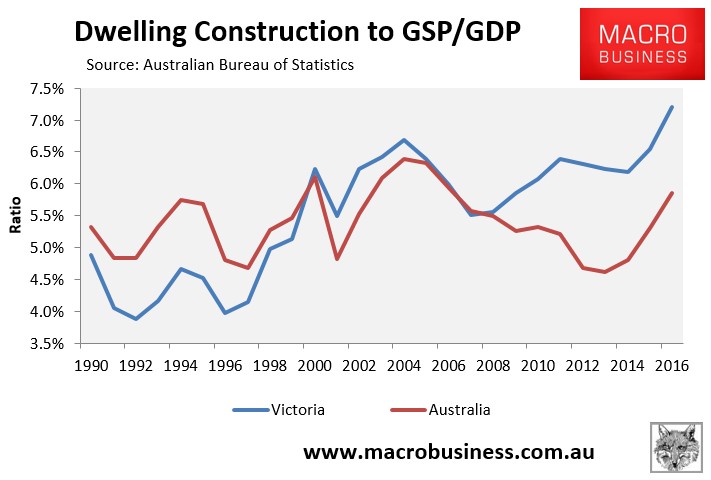
Such a growth model is like a dog chasing its tail. There is activity but the per capita Victorian (Melbourneian) is no better off. Meanwhile, it accumulates debt as seen in Victoria’s trade performance. Exports recorded minimal growth in the 14 years to June 2016, whereas imports more than doubled. Accordingly, the state’s trade deficit had blown out to a whopping $47.5 billion in the year to June 2016 (see below charts).
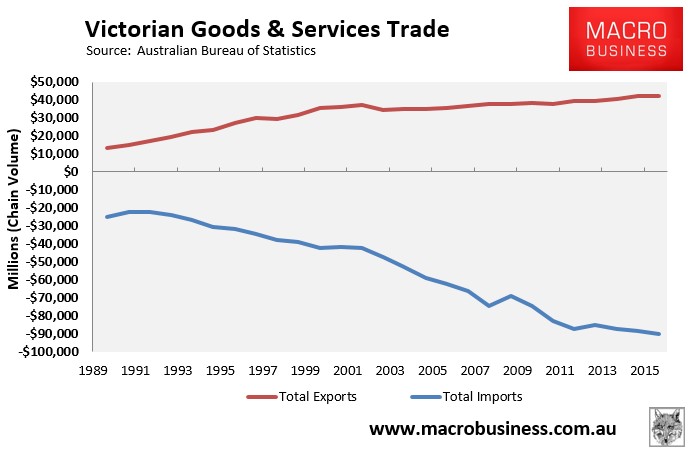
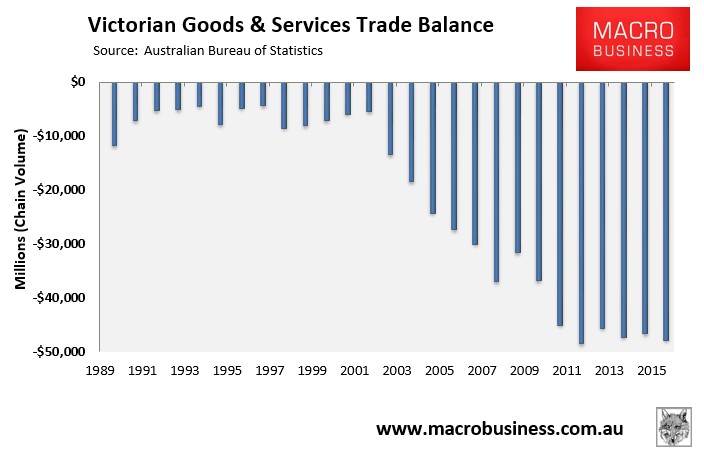
Other indicators of living standards that are not captured in the aggregate economic statistics have unambiguously gotten worse in Melbourne, as the city’s population has swelled by nearly one million people, or 26%, over the past decade (let alone to the projected 8 million people mid-century).
Melbourne’s economic and social infrastructure is becoming increasingly crush-loaded every year as rampant population growth continually outstrips capacity, leading to overcrowding on roads, public transport, and in schools. Meanwhile, as noted above, housing affordability and rental availability has also deteriorated markedly on the back of the population deluge. And yet these huge costs have been ignored entirely by Carroll.
Melbourne is running full tilt on a rat wheel economy that Australian politicians and their mates in a few chosen sectors are enriching themselves on. It is the perfect exemplar for what has gone wrong across the nation. And here we have academics like Carroll cheering this situation on as if it is some kind of economic miracle!

